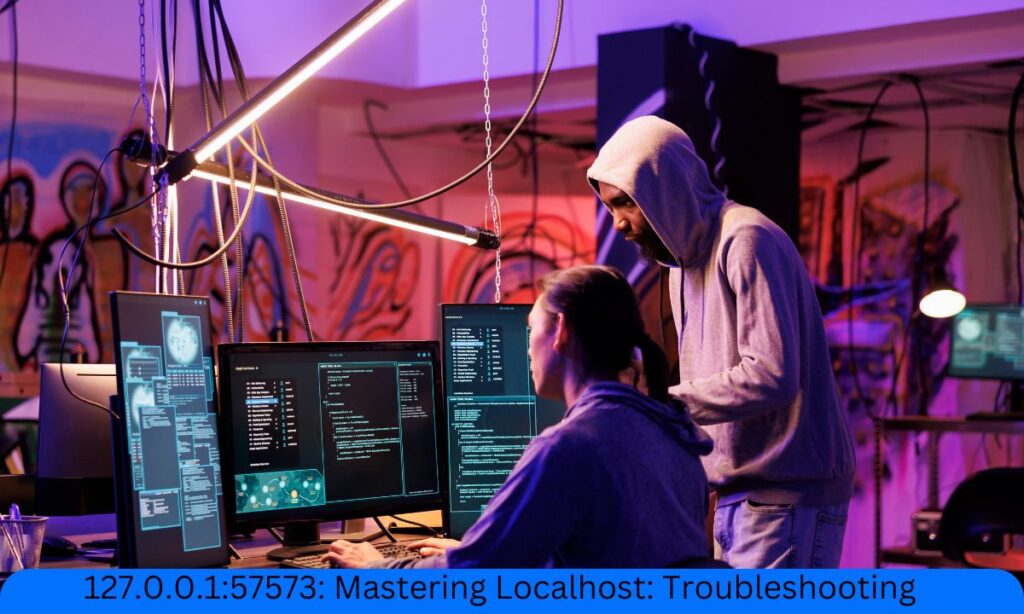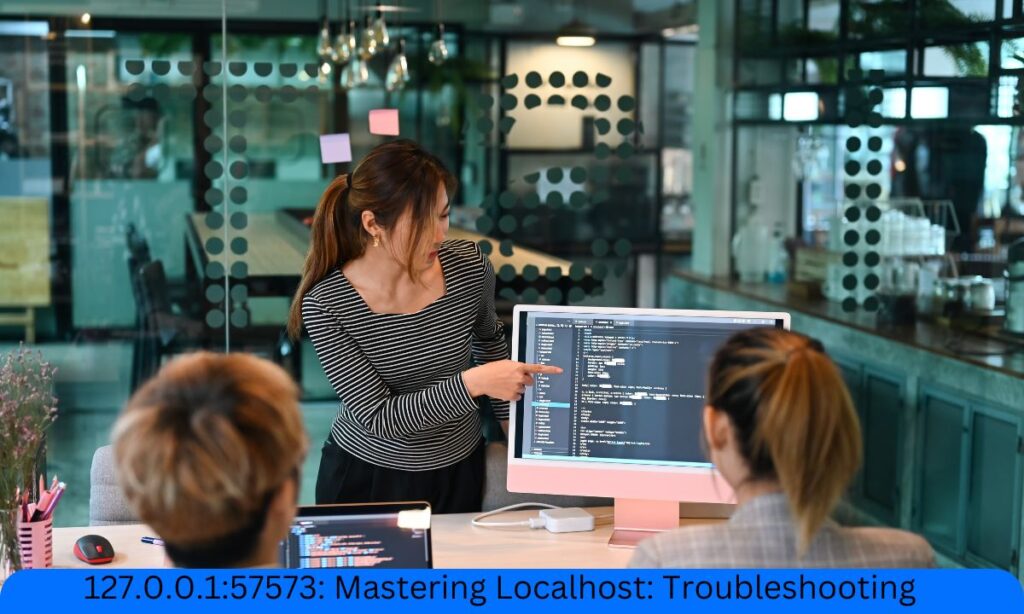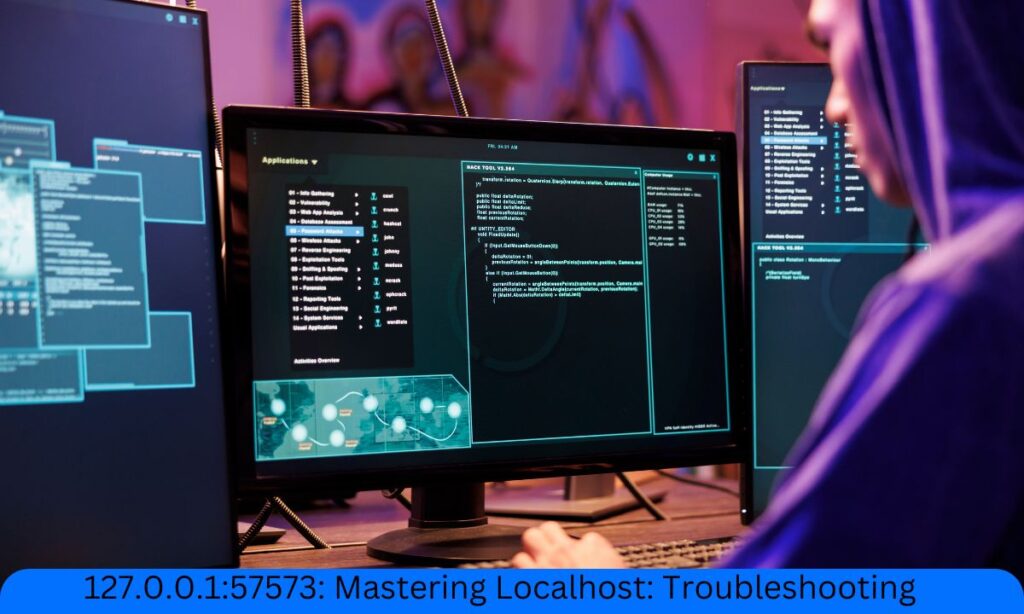127.0.0.1:57573: Mastering Localhost: Troubleshooting

127.0.0.1:57573
In the realm of computer networking and application development, encountering specific IP addresses and port numbers is a routine experience. One address you might come across is 127.0.0.1:57573. This combination of an IP address and port is often referenced when applications running locally on your machine attempt to communicate with themselves or other local services.
When errors arise involving 127.0.0.1:57573, it can be confusing to troubleshoot, especially if you’re unfamiliar with how IP addresses, ports, and network protocols function. This article will explore what this address means, common issues related to it, and step-by-step guidance on troubleshooting.
The Anatomy of “127.0.0.1:57573”
What is the IP Address 127.0.0.1?
- 127.0.0.1: This is known as the loopback address or localhost. It’s a special IP address used to refer to the local machine—your computer. This address ensures that any data sent to
127.0.0.1is immediately looped back and received by the same machine, without ever being sent out over a network.- Loopback addresses (typically ranging from
127.0.0.1to127.255.255.255) are used for internal testing and communication. When an application binds to127.0.0.1, it means the service is only accessible from the machine it’s running on.
- Loopback addresses (typically ranging from
Read Also: Syntax Error: Eol While Scanning String Literal
What is Port 57573?
- 57573: Port numbers are like doorways through which data enters or leaves a machine. Ports allow multiple applications on the same machine to communicate simultaneously without interfering with each other. Port
57573could be assigned dynamically by the operating system or pre-configured by an application to handle a specific service.- Ports range from 0 to 65535, where:
- Ports 0–1023 are reserved for well-known services (like HTTP, FTP, etc.).
- Ports 1024–49151 are registered ports that may be used by certain programs.
- Ports 49152–65535 are dynamic or private ports, often chosen by the operating system when an application needs a port to communicate but doesn’t specify one.
- Ports range from 0 to 65535, where:
In this case, 127.0.0.1:57573 represents a local service on your computer, listening for traffic on port 57573.

Various Troubleshooting Steps for 127.0.0.1:57573
When dealing with issues related to 127.0.0.1:57573, you might encounter errors like “Connection Refused” or “Port in Use”. Below are common problems and troubleshooting methods to resolve them.
Read Also: Type Error: Only Integer Scalar Arrays Can Be Converted To a Scalar Index
Port Conflicts
Problem:
Port 57573 might already be in use by another application, leading to conflicts when multiple programs try to bind to the same port.
Solution:
- Check for running processes:
- On Linux/macOS, open the terminal and run

sudo lsof -i :57573
- On Windows, open Command Prompt as Administrator and run:
netstat -ano | findstr :57573
This will list any processes using the port.
Kill conflicting processes:
- If you find a process using port 57573 that shouldn’t be, kill it using the process ID (PID) from the above commands.
- On Linux/macOS, use:
Read Also: Type Error: Only Integer Scalar Arrays Can Be Converted To a Scalar Index
sudo kill -9 <PID>
- On Windows:
taskkill /PID <PID> /F
Firewall Restrictions
Problem:
The system’s firewall might be blocking traffic to and from port 57573, preventing applications from communicating.
Solution:
- Check firewall settings:
- On Linux, use
iptablesto list firewall rules
- On Linux, use
sudo iptables -L
- On Windows, navigate to Windows Defender Firewall > Advanced settings, and check if there are any inbound or outbound rules blocking port 57573.
Allow traffic:
- If needed, open port 57573 by configuring your firewall rules to allow traffic through this port. On Linux:
sudo iptables -A INPUT -p tcp --dport 57573 -j ACCEPT
-
- On Windows, add a new rule to allow traffic through this port in Advanced Firewall Settings.
Application Errors
Problem:
The application using 127.0.0.1:57573 may not be properly configured, or it may be crashing due to other issues like misconfigured settings or dependencies.
Solution:
- Check application logs:
- Most applications that run locally generate logs. Look at the log files for specific error messages or warnings. The logs will often contain clues about why the service on
127.0.0.1:57573is failing.
- Most applications that run locally generate logs. Look at the log files for specific error messages or warnings. The logs will often contain clues about why the service on
- Restart the application:
- Try restarting the service or application bound to
127.0.0.1:57573. Sometimes, network services can hang or fail due to transient issues that are resolved on a restart.
- Try restarting the service or application bound to
- Reinstall or Update the application:
- Ensure that the application is up to date, as older versions might contain bugs or compatibility issues with newer system updates.
Read Also: The Tiranga Game Explained: History, Variations, and How to Play with Friends
System Resources Issues
Problem:
Insufficient system resources like memory or network buffers might be causing the application or service to fail.
Solution:
- Check system resource usage:
- On Linux/macOS, use the
toporhtopcommand to monitor CPU and memory usage. - On Windows, open Task Manager to check system resource usage.
- On Linux/macOS, use the
- Free up resources:
- Close unnecessary applications or restart the machine to free up memory and other resources that might be causing issues.

Understanding TCP/IP and the Loopback Address
TCP/IP Basics
The Transmission Control Protocol/Internet Protocol (TCP/IP) is the fundamental communication protocol suite used by the internet and local networks. It ensures that data can travel between devices, whether over local networks or across the world.
- TCP: This protocol ensures reliable data transmission by establishing a connection between the sender and receiver, verifying that data packets arrive intact.
- IP: The Internet Protocol is responsible for addressing and routing packets to their destination.
The Loopback Address (127.0.0.1)
The loopback address is part of the IP standard, used to test network functions on the local machine. It allows network services to communicate with themselves, facilitating application development, troubleshooting, and local testing. Unlike other IP addresses, traffic sent to 127.0.0.1 never leaves the machine, making it ideal for testing purposes.
Conclusion
Understanding 127.0.0.1:57573 involves recognizing both its components: the loopback IP address and the port number. When issues arise, troubleshooting often requires investigating port conflicts, firewall settings, or the application’s behavior. By following the steps outlined here, you can resolve common issues and ensure that local applications using this address and port function as expected.





